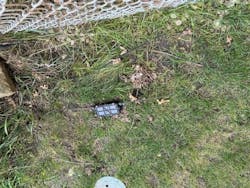A quick guide to simplifying rural subscriber fiber drop restoration and keeping customers connected.
With the push to serve all residences with high quality broadband, we are seeing continued expansion of networks to support the less-populated rural areas. Reaching these areas not only requires many more miles of trunk fiber, but also the subscriber residence tends to be located further from the fiber trunk lines, resulting in longer fiber drops. A longer fiber drop line offers more surface area for damage to occur, and the need for efficient restoration practices.
The days of entirely replacing a damaged fiber drop is generally behind us.
Early in the days of fiber-to-the-home (FTTH) networks, it was standard practice for the internet service provider (ISP) to replace a fiber drop that was damaged by gardeners, pet fence installers, landscapers, in-ground sprinkler installation, etc. This practice was deemed necessary because fiber was considered fragile, required skilled technicians to splice, and fiber attenuation was saved (margin) for potential other restoration activities and macro-bend losses bound to happen in the plant.
Today, FTTH networks have become widely deployed. We now have a great understanding of fiber’s capabilities, robustness, and the proper techniques for its handling by the labor force. What once required a $30,000 fusion splicer and an environmentally conditioned splicing vehicle, is now accomplished with a <$5,000 fusion splicer and a small table or technician’s knee. And with the improvements in glass and splicing technology, the repair results are superior, even with less-trained technicians.
With the explosion in fiber deployments, the quantity of damaged fiber drop lines will continue to climb. Each needed repair decreases the ISP’s profits and consumes valuable labor resources, which is scarce in today’s employment environment. The days of entirely replacing a damaged fiber drop is generally behind us. Especially when a fiber drop’s route needs to pass under a patio, sidewalk, driveway, road or path, etc.; all which require more time and resources. The ISP needs a process to efficiently and cost-effectively restore damaged fiber drop cables.
- It only requires a single fiber or pair of fibers.
- Cost-effective. The cost of the repair is borne on a single fiber; not shared across hundreds of fibers.
- Simple installation. Allows less-skilled technicians to perform repair, and time-to-repair is critical as the subscriber is without service, so quick restoration is important to improving customer satisfaction.
- Cable slack. Direct buried drop cables will require a cable extension solution to efficiently repair a damaged cable in-place.
The ISP repair process needs to encompass a solution that can accommodate the unique needs of a subscriber drop. The goal should be for a single technician to be able to complete the restoration before leaving the site; eliminating a need to deploy a secondary rehab crew. For underground repairs, the installation should limit the size of the ground excavation, enabling a single drop technician to complete the job with just a shovel. The repair solution needs to be stocked in the technician’s vehicle (so the repair solution should be able to be deployed aerially or below grade), robust, water-tight, suitable for direct buried or strand installations, and include all required installation components.
Subscriber fiber drop damage is inevitable and a cost of doing business. The key is to be prepared with a restoration procedure and select a solution that permanently completes the repair in a cost-effective manner.
About the Author
Tom Randstrom
Product Marketing Manager, Enginuity Communications
Tom Randstrom is Product Marketing Manager at Enginuity Communications. He has more than 30 years’ experience in fiber optics and the telecom market. For more information, please email [email protected], visit www.enginuitycom.com, or reach out at 800-980-3266.

